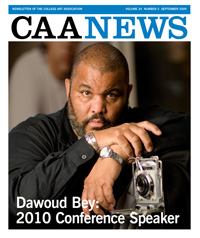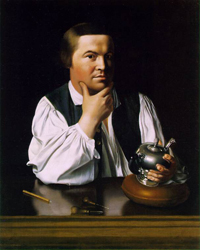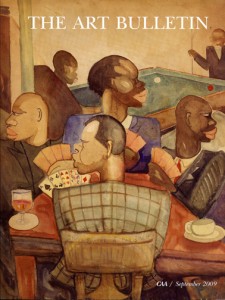CAA News Today
Obama Names Committee on the Arts and the Humanities Leaders
posted by Christopher Howard — September 18, 2009
Barack Obama has appointed new leaders to the President’s Committee on the Arts and the Humanities. George Stevens, Jr., and Margo Lion will serve as cochairs, and Mary Schmidt Campbell will be vice chair.
This committee, founded in 1982 and comprised of private citizens from across the United States, advocates for the arts and humanities as core of a vital society. It works with the National Endowment for the Arts, the National Endowment for the Humanities, and the Institute of Museum and Library Services to advance nonpartisan cultural objectives of the Obama administration.
Stevens is a writer, director, producer of motion pictures and television, founder of the American Film Institute, and creator of the Kennedy Center Honors. He fostered a new generation of documentary filmmakers as head of the US Information Agency’s Motion Picture Service during the Kennedy presidency.
As a Broadway producer, Lion has worked with Tony Kushner, David Mamet, Arthur Miller, August Wilson, and George C. Wolfe, and her work has earned Tony and Olivier awards and a Pulitzer Prize. She is also an adjunct professor and a member of the Dean’s Council at New York University’s Tisch School of the Arts.
Tisch is also home to Campbell, where she is dean. A former chair of the New York State Council on the Arts, Campell was executive director of the Studio Museum in Harlem, where she wrote the catalogue for the exhibition Memory and Metaphor: The Art of Romare Bearden, 1940–1987.
In early August, President Obama appointed Rachel Goslins, an independent television and film producer, as the committee’s executive director.
Obama Names Committee on the Arts and the Humanities Leaders
posted by Christopher Howard — September 18, 2009
Barack Obama has appointed new leaders to the President’s Committee on the Arts and the Humanities. George Stevens, Jr., and Margo Lion will serve as cochairs, and Mary Schmidt Campbell will be vice chair.
This committee, founded in 1982 and comprised of private citizens from across the United States, advocates for the arts and humanities as core of a vital society. It works with the National Endowment for the Arts, the National Endowment for the Humanities, and the Institute of Museum and Library Services to advance nonpartisan cultural objectives of the Obama administration.
Stevens is a writer, director, producer of motion pictures and television, founder of the American Film Institute, and creator of the Kennedy Center Honors. He fostered a new generation of documentary filmmakers as head of the US Information Agency’s Motion Picture Service during the Kennedy presidency.
As a Broadway producer, Lion has worked with Tony Kushner, David Mamet, Arthur Miller, August Wilson, and George C. Wolfe, and her work has earned Tony and Olivier awards and a Pulitzer Prize. She is also an adjunct professor and a member of the Dean’s Council at New York University’s Tisch School of the Arts.
Tisch is also home to Campbell, where she is dean. A former chair of the New York State Council on the Arts, Campell was executive director of the Studio Museum in Harlem, where she wrote the catalogue for the exhibition Memory and Metaphor: The Art of Romare Bearden, 1940–1987.
In early August, President Obama appointed Rachel Goslins, an independent television and film producer, as the committee’s executive director.
September CAA News Published
posted by Christopher Howard — September 16, 2009
 The September CAA News has just been published. All individual and institutional members may download the PDF from the CAA website.
The September CAA News has just been published. All individual and institutional members may download the PDF from the CAA website.
Inside you’ll find early information about the upcoming Annual Conference. Among the special events for Chicago is a keynote address by the renowned photographer Dawoud Bey, who will speak at Convocation. In addition, the painter Phyllis Bramson has been named one of two artists to be interviewed in ARTspace.
Also included in the issue are details about two conference mentoring sessions—the Artists’ Portfolio Review and Career Development Mentoring—as well as an interview with Jackie Battenfield, the author of the recently published book, The Artist’s Guide: How to Make a Living Doing What You Love.
The September newsletter is the second in our return to a digital-only format. The layout has been changed to better fit your computer screen, and all images are now in color. If you prefer to read a hard copy, printed pages are clear and readable.
Submissions to the Endnotes section of the November CAA News are due by September 30; please review the guidelines before sending your listing. Questions or concerns? Please contact Christopher Howard, CAA managing editor.
Deadline for the Wyeth Book Grant Extended
posted by CAA — September 08, 2009
 The deadline for the Wyeth Foundation for American Art Publication Grant, established in 2005 with funding from the Wyeth Foundation for American Art, has been extended to Friday, October 9, 2009.
The deadline for the Wyeth Foundation for American Art Publication Grant, established in 2005 with funding from the Wyeth Foundation for American Art, has been extended to Friday, October 9, 2009.
The Wyeth grant supports book-length scholarly manuscripts in the history of American art, visual studies, and related subjects that have been accepted by a publisher on their merits but cannot be published in the most desirable form without a subsidy. For purposes of the program, “American art” is defined as art created in the United States, Canada, and Mexico prior to 1970.
For more information, please contact Alex Gershuny, CAA editorial associate, at 212-691-1051, ext. 254.
Image: John Singleton Copley, Paul Revere, 1768, oil on canvas, 35 1/8 x 28 1/2 in. Gift of Joseph W. Revere, William B. Revere and Edward H. R. Revere, 1930. 30.781 (artwork in the public domain)
September 2009 Issue of The Art Bulletin Published
posted by Christopher Howard — September 02, 2009
 The September 2009 issue of The Art Bulletin, the leading publication of art-historical scholarship, has just been published. It will be mailed to those CAA members who elect to receive it, and to all institutional members.
The September 2009 issue of The Art Bulletin, the leading publication of art-historical scholarship, has just been published. It will be mailed to those CAA members who elect to receive it, and to all institutional members.
Five articles make up the issue. Leading off is Rachel Kousser’s “Destruction and Memory on the Athenian Acropolis,” which argues that in the way it was commemorated, the Persians’ sack of the Acropolis in 480 BCE took on paradigmatic significance as an example of “Oriental violence.” Next is a text by Elena Boeck, who in “Simulating the Hippodrome: The Performance of Power in Kiev’s St. Sophia” analyzes strategies of display, appropriation, and simulation of Byzantine imperial symbols by Prince Iaroslav “the Wise” in the paintings of the hippodrome in Kiev’s St. Sophia.
In “Rubens and the Northern Past: The Michielsen Triptych and the Thresholds of Modernity,” Lynn F. Jacobs interrogates the miraculous thresholds of this work by Peter Paul Rubens, which negotiate relations between the donors and God and between the meanings inherent in the life and theology of Christ. Her essay is followed by “Nature and the Ideal in Khnopff’s Avec Verhaeren: Un Ange and Art, or the Caresses,” in which Brendan Cole examines the work of Fernand Khnopff from an iconographic perspective to reveal how the central concerns for all Symbolist artists—of duality and the reconciliation of opposites—are encoded in his paintings.
Last, Phoebe Wolfskill’s “Caricature and the New Negro in the Work of Archibald Motley Jr. and Palmer Hayden” evaluates the perplexing appearance of racial caricature in compositions by these two “New Negro” Renaissance painters and considers how pervasive stereotypes might inform self-perception. Hayden’s Nous quatre à Paris from ca. 1930 is the cover image for this issue.
Also included are seven reviews of books on Romanesque Partheny, Castilian culture, Inigo Jones, Utamaro, science in art, and more. Please read the full table of contents for more details.
CAA Joins Task Force on University Galleries and Museums
posted by Christopher Howard — September 01, 2009
In response to troubling trends in university museums and galleries—including the sale of Maier Art Museum paintings by Randolph College, the closure of the Rose Art Museum at Brandeis University, and the threat of sale of important modernist works at Fisk University—a task force was formed that includes CAA, the American Association of Museums, the Association of Art Museum Directors, the Association of College and University Museums and Galleries, and the Kress Foundation to address ways to educate university trustees about the educational value of university museums and to explore protective avenues. A petition was circulated to various associations and also set up online, which received several thousand signatures—including many from CAA members. The petition will be published in the Chronicle of Higher Education later this fall. Quiet conversations are continuing with Brandeis trustees, and several university accreditation commissions have been apprised of the concerns of the task force and the visual-arts field.
On the same topic, caa.reviews recently published an essay entitled “Curricular Connections: The College/University Art Museum as Site for Teaching and Learning.” The author, Laurel Bradley, who is director of exhibitions and curator of the College Art Collection at Carleton College, provides a brief history of university museums and galleries since the mid-twentieth century before exploring several recent initiatives—some funded by the Mellon Foundation’s College and University Art Museum Program—that combine academic and curatorial teaching and education in novel, and often successful, ways.


